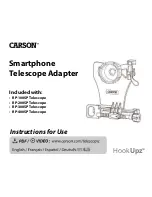
28467 Rev I
14
02-02
NOVUS TOP DV GAS APPLIANCE INSTALLATION INSTRUCTIONS
Figure 23
Figure 24
F. UTILITIES
1. HIGH ALTITUDE INSTALLATION
For the U.S. installation, appliances are tested and approved for elevations from 0-2000 feet. When installing this
appliance at an elevation above 2000 feet, National Fuel Gas Codes require a decrease of the input rating by
changing the existing burner orifice to a smaller size. Input should be reduced 4% for each 1000 feet above sea
level. Check with the local gas utility for proper orifice size identification. Orifices are available from your Heatilator
distributor.
For Canada, appliances are certified for elevations from 0-4500 feet. When installing this appliance at an elevation
between 0-4500 feet in Canada, the input rating does not need to be reduced. When installing this appliance at an
elevation above 4500 feet in Canada, check with local authorities.
2. GAS LINE CONNECTION
Open the control access panel as shown in Figures 25 and 26. The appliance is provided with a stainless steel
flexible connector and manual shutoff valve. The incoming gas line should be piped into the valve compartment and
connected to the 1/2 FIP connection provided on the manual shutoff valve. All connections must be tightened and
checked for leaks with a soapy water solution or leak detector. Bleed the gas line to extract any air that may have
been trapped inside the pipe. See Figure 27 to connect gas line. (Gas connection may also be made by taking out
the knockout in the bottom pan to allow connection through the bottom of the appliance.)
d. Assembling the Slip Sections
Slip sections should be snapped into the first
mating piece, then expanded to their desired
length, making sure that a 1.5 overlap is
maintained between the two sections of the slip
section. The sections need to be secured by
driving two screws through the overlapping
portions of the vent. See Figure 23. This will
secure the slip section to the desired length and
prevent it from separating. The slip section can
then be attached to the next section of vent.
e. Disassembling Vent Sections
(only if necessary)
To disassemble any two pieces of pipe, rotate
either section so that the seams on both pipe
sections are aligned as shown in Figure 24. They
can then be carefully pulled apart.
All manuals and user guides at all-guides.com














































